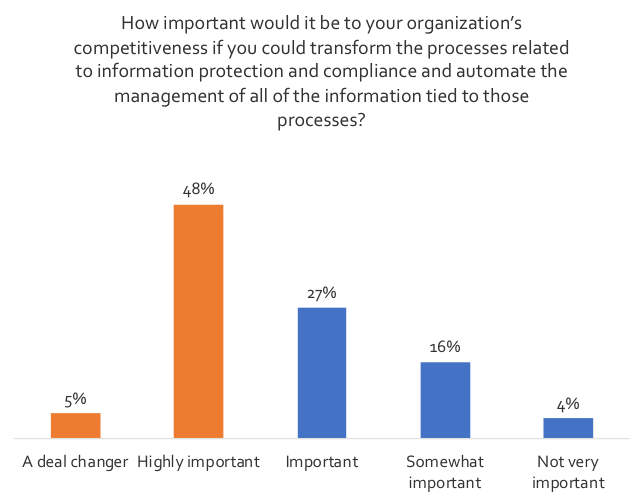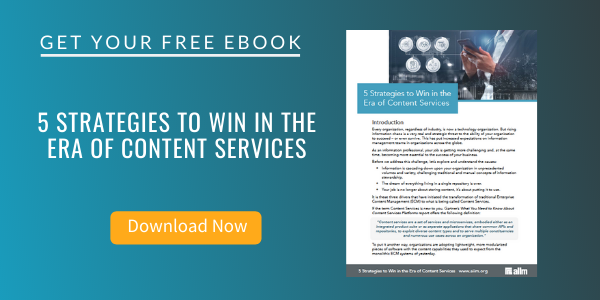The rising volume of information and its potential value to customer experiences is changing what is needed from records management and information governance. Organizations clearly understand that they have an information governance problem but are struggling with solutions as the tide of information chaos rises.
Convincing management that they should even “care” about information governance is a problem for 48% of organizations. Core records management and governance concepts remain critical, but organizations increasingly seek to automate implementation and make these capabilities as embedded and invisible as possible.
Over 50% of organizations see automation of compliance and governance as “highly important” or “a deal changer,” but for 70% of them, key governance processes remain less than 50% automated. (AIIM, 2018, Automating Governance and Compliance, Overall N = 275)


For many organizations, the link has yet to be effectively made between the prudent management and stewardship of information assets and the ability of an organization to use this capability to deliver enhanced value and customer experiences. In addition, the information-related risk is often viewed through the important – but narrow – lens of eDiscovery and potential litigation exposure rather than through the broader lens of security and privacy.
An important data point as organizations think about positioning their Information Governance needs is how the need for these capabilities is sold within the organization. 43% of organizations say that cautions and concerns about information risk are often superseded by arguments about information value and use. 58% of our survey respondents agree that “Information Governance is better sold indirectly – as a byproduct of automation and customer experience – than head-on.”
